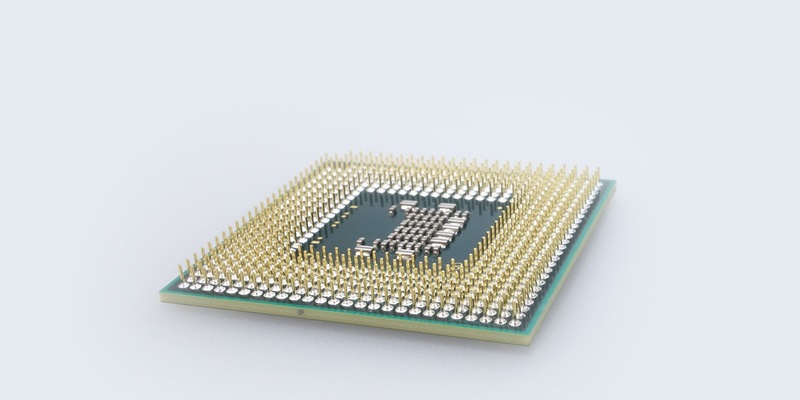The server industry is buzzing with anticipation as Intel prepares to launch its next-generation Granite Rapids Xeon CPUs in 2024. These powerful chips will revolutionize server performance, but with great power comes the need for effective cooling solutions. With a power delivery of up to 700W, these CPUs require robust and efficient cooling in order to operate optimally.
Release and Compatibility
The Intel Granite Rapids Xeon CPUs will make their debut in the server market after the E-Core-only Sierra Forest. These innovative chips will replace the 5th Gen Emerald Rapids processors, promising significant improvements in performance and efficiency. Server administrators and enthusiasts eagerly await their arrival to witness the advancements they offer. Furthermore, the Granite Rapids CPUs will be compatible with the Birch Stream platform, supporting both LGA 4710 and LGA 7529 socket flavors.
Cooling Requirement
To harness the unparalleled power of the Granite Rapids Xeon CPUs, substantial cooling solutions are crucial. These chips come packed with unprecedented capabilities that generate significant heat when under heavy workloads. With power delivery reaching up to 700W, traditional cooling methods may prove inadequate. New and robust cooling solutions will need to be implemented to keep these processors operating at their full potential.
Comparison with Existing Flagship
Intel’s current flagship, the Xeon Platinum 8490H, is known for its impressive performance and cooling requirements. However, the Granite Rapids Xeon CPUs surpass its cooling demands. The flagship L38, designed specifically for the upcoming CPUs, offers cooling capacity twice as potent as the Xeon Platinum 8490H. This highlights the necessity for enhanced cooling solutions to effectively dissipate the excess heat produced by these high-performance processors.
Increased Power Consumption
Due to their increased core count, the Granite Rapids-SP chips are anticipated to have higher thermal design power (TDP) ratings and overall power consumption. The advanced capabilities and performance enhancements of these CPUs require more energy, resulting in a significant increase in power consumption. Administrators must consider this when planning for power requirements and implementing appropriate cooling solutions for their server setups.
Features of the Dynatron L38 CPU Cooler
The Dynatron L38 CPU cooler emerges as an optimal cooling solution perfectly tailored for the Granite Rapids Xeon CPUs. Specifically designed to address the enhanced cooling needs, this innovative cooler efficiently dissipates the excess heat generated by the powerful processors. Let’s delve into the design and capabilities of the Dynatron L38 CPU cooler.
Fan Design and Performance
The Dynatron L38 CPU cooler boasts three 80mm fans with a massive duct-based design. These fans are built to handle high-speed operation, capable of reaching up to 8000 RPM. Such a design ensures efficient airflow, expelling hot air from the system rapidly. Additionally, these fans deliver an impressive airflow of up to 115.61 CFM at 57.00 dBA at maximum output, ensuring efficient heat dissipation even under heavy workloads.
Fan Power Rating
The fans of the Dynatron L38 CPU cooler exhibit immense power capability to maintain optimal cooling efficiency. With a power rating of 24.72W at 100% load, these fans showcase their prowess in handling the cooling demands of the Granite Rapids Xeon CPUs. Their robust power delivery ensures that the processors are adequately cooled, preventing overheating and potential performance degradation.
Noise Levels
Admittedly, the robust cooling capabilities of the Dynatron L38 CPU cooler come at the cost of increased noise production. These fans, designed explicitly for server environments, prioritize efficient cooling over silent operation. Therefore, users should anticipate higher noise levels when operating their servers with the Dynatron L38 CPU cooler. However, in the context of intense server tasks and the need for optimal cooling, this trade-off is expected and acceptable.
Compatibility with CPU Power
The Dynatron L38 CPU cooler establishes itself as a reliable solution to address the cooling needs of powerful CPUs. With compatibility for CPU power up to 700W, it aligns perfectly with Intel’s Granite Rapids Xeon CPUs, ensuring efficient heat dissipation for uninterrupted server operation. Server administrators can rest assured that their high-performance processors will remain within optimum temperature ranges, contributing to enhanced system stability and longevity.
Intel’s upcoming launch of the Granite Rapids Xeon CPUs presents exciting prospects for the server industry. With these powerful processors on the horizon, it is crucial to acknowledge their enhanced cooling requirements. The Dynatron L38 CPU cooler serves as an excellent solution, capable of efficiently handling the cooling demands of these advanced chips. As server administrators gear up for the arrival of the Granite Rapids Xeon CPUs, investing in robust and reliable cooling solutions will be paramount to maximizing performance and maintaining server stability.

